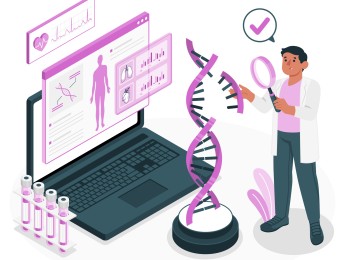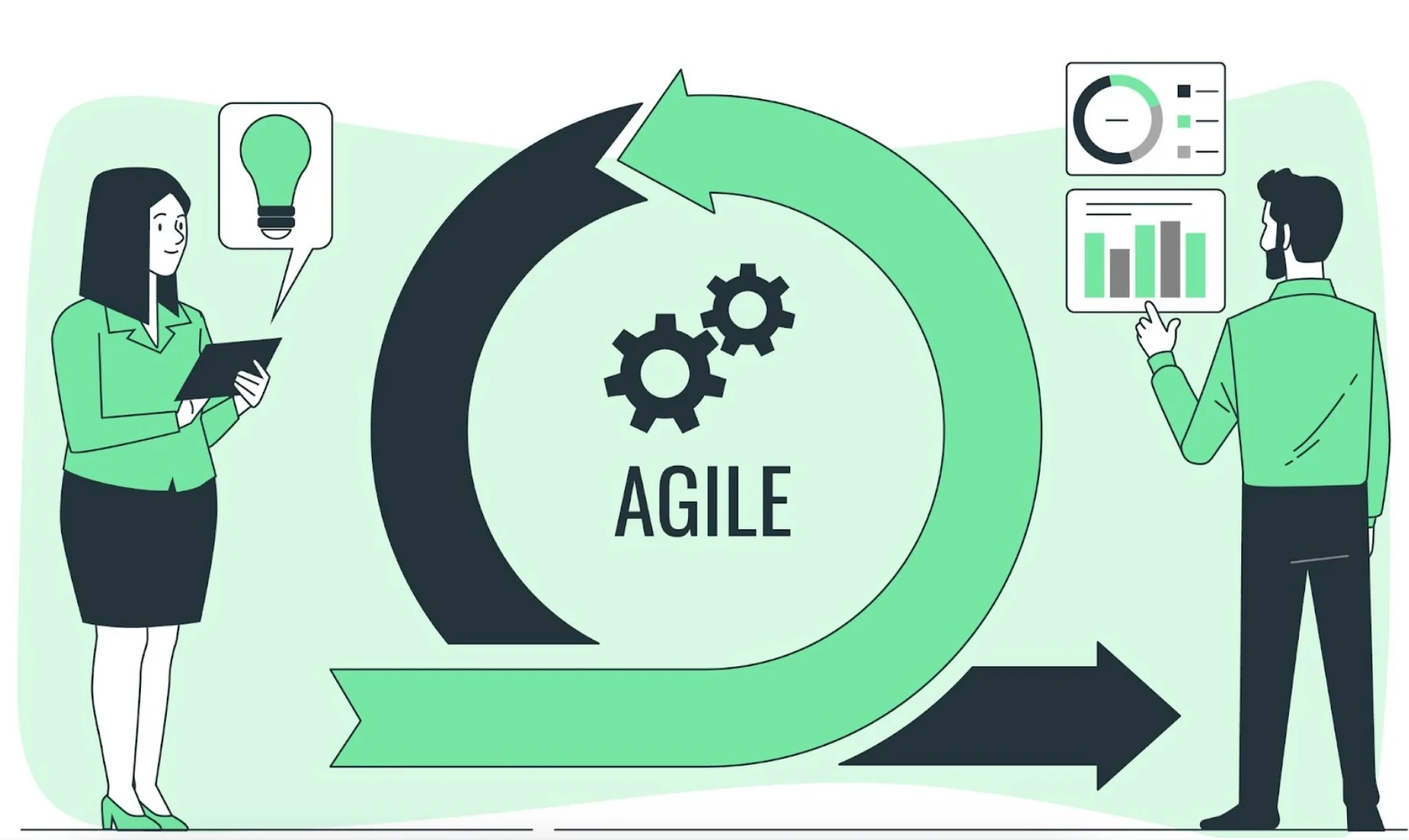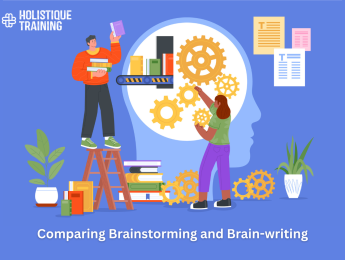- Table of Contents
- Introduction
- What Is Customer Analytics?
- Why Is Customer Analytics Important?
- Data-Driven Decision Making
- Enhanced Customer Experiences
- Improved Marketing Effectiveness
- Proactive Customer Retention
- Product Development and Innovation
- Revenue Growth and Business Performance
- How to Collect and Store Customer Analytics Data
- 1. Define Key Metrics
- 2. Data Collection Methods
- 3. Data Integration
- 4. Data Cleaning and Transformation
- 5. Data Storage and Security
- What to Do with Customer Analytics
- 1. Customer Segmentation
- 2. Personalisation
- 3. Churn Prediction
- 4. Cross-Selling and Upselling
- 5. Marketing Campaign Optimisation
- 6. Product Development and Innovation
- Customer Analytics Trends in 2025
- AI-Powered Analytics
- Predictive and Prescriptive Analytics
- Real-Time Analytics
- Ethical Data Use
- Voice and Conversational Analytics
- Data Visualisation and Storytelling
- Conclusion
Introduction
In today's data-driven world, businesses can access abundant customer information. Customer data analytics has emerged as a powerful tool that enables companies to gain insights into customer behaviour, preferences, and needs. By harnessing the power of customer analytics, businesses can make informed decisions, enhance customer experiences, and drive growth. In this blog post, we will explore the fundamentals of customer data analytics, including its definition, data collection and storage methods, the significance of customer analytics, and the latest trends in 2023.
What Is Customer Analytics?
Customer Analytics is the linchpin of understanding customer behaviour and preferences. By deciphering vast datasets encompassing demographics, purchase history, and interactions, businesses can identify patterns and trends crucial for informed decision-making. Applying statistical models and machine learning algorithms, organisations gain insights into customer segmentation, lifetime value, churn prediction, and more.
Application | Description |
Customer Segmentation | Tailoring marketing strategies and offerings to specific segments |
Personalisation | Customising marketing campaigns and product recommendations |
Churn Prediction | Identifying signs of customer dissatisfaction to reduce churn |
Cross-Selling and Upselling | Recommending complementary products/services for increased revenue |
Marketing Campaign Optimisation | Evaluating campaign effectiveness for targeted strategies |
Product Development | Gaining insights for innovation and staying ahead of competitors |
Table 1: Key Applications of Customer Analytics
Why Is Customer Analytics Important?
Customer Analytics guides businesses through the vast sea of consumer data. Its importance reverberates through various facets of business operations, shaping strategies and ensuring sustainable growth. Let's delve into why customer analytics stands as a pivotal force in the contemporary business landscape:
Data-Driven Decision Making
In the era of information overload, businesses often find themselves drowning in data. Customer Analytics is a lifeline, transforming this raw data into actionable insights. By deciphering the intricacies of customer behaviour, preferences, and trends, businesses can make decisions grounded in evidence rather than intuition. This shift from gut feeling to data-driven decisions ensures that resources are allocated efficiently, investments are made wisely, and strategies are aligned with real market needs.
Enhanced Customer Experiences
In today’s hyper-competitive market, customers seek more than just products or services; they demand experiences. Customer Analytics enables businesses to personalise these experiences. By dissecting customer data, companies can unveil individual preferences and behaviour patterns. With this knowledge, businesses can tailor their interactions by offering personalised product recommendations, custom marketing messages, and targeted customer support. This tailored approach creates a profound impact, enhancing customer satisfaction and fostering loyalty. As businesses become more attuned to their customers, they forge deeper, lasting relationships, cementing their position in the market.
Improved Marketing Effectiveness
Thanks to Customer Analytics, once reliant on broad strokes, marketing has become a precise art. By scrutinising customer data, businesses can dissect their audience. They can understand the nuances of different customer segments, comprehending what resonates with each group. With this knowledge, marketing campaigns can be fine-tuned, becoming laser-focused and highly effective. Resources are no longer squandered on generic advertisements that miss the mark. Instead, businesses can create compelling, targeted campaigns that resonate with specific customer groups, thereby optimising their marketing spend and maximising returns on investment.
Proactive Customer Retention
By analysing customer data, businesses can predict and prevent customer churn. Customer analytics identifies early warning signs of dissatisfaction, allowing businesses to implement proactive retention strategies. Businesses can retain valuable customers and reduce churn rates by addressing customer concerns and offering personalised incentives. In fact, according to DFY, 58% of enterprises are experiencing a notable surge in customer loyalty and retention due to customer analytics.
Product Development and Innovation
Innovation is the lifeblood of progress. Customer Analytics acts as a pulse check, indicating market demands, customer pain points, and unmet needs. By mining customer feedback, purchasing behaviour, and market trends, businesses gain insights into areas ripe for innovation. Whether it's refining existing products or introducing groundbreaking solutions, these insights serve as the guiding light, ensuring businesses stay ahead of the curve. By aligning their offerings with customer demands, companies meet and exceed customer expectations, establishing themselves as market leaders and pioneers in their respective domains.

Revenue Growth and Business Performance
Customer analytics enables businesses, specifically 44% of them, to increase ROI and drive overall business performance. By leveraging insights from customer data, businesses can identify cross-selling and upselling opportunities, optimise pricing strategies, and focus on high-value customers. This, in turn, improves customer lifetime value, revenue growth, and profitability.
In summary, customer analytics is not just a tool; it is the cornerstone upon which businesses can build lasting, meaningful relationships with their customers. It is the key that unlocks the doors to customer understanding, empowering businesses to cater to their audience with precision and finesse. In the digital age where customer expectations are soaring, Customer Analytics is not just important; it is indispensable, marking the difference between thriving in the market and fading into obscurity.
How to Collect and Store Customer Analytics Data
Collecting and storing customer data effectively are critical steps in the realm of Customer Analytics. It's not just about accumulating data but doing so in a manner that is ethical, secure, and conducive to meaningful analysis. Here are the steps involved in this essential process:
1. Define Key Metrics
Before embarking on data collection, it is imperative to define the metrics and Key Performance Indicators (KPIs) that align with your business objectives. Whether it’s Customer Acquisition Cost (CAC), Customer Lifetime Value (CLTV), Customer Satisfaction Scores (CSAT), or other vital metrics, clarity on what to measure forms the foundation of your data collection strategy.
2. Data Collection Methods
Implementing a varied array of data collection methods ensures a holistic understanding of customer behaviour:
- Surveys: Structured surveys can provide valuable qualitative insights, deepening customer opinions and preferences.
- Website Analytics: Tools like Google Analytics track online visitor behaviour, revealing patterns in website usage, popular pages, and conversion rates.
- Customer Relationship Management (CRM) Systems: CRM systems centralise customer interactions, capturing valuable information about communication history, purchase behaviour, and support requests.
- Point-of-Sale (POS) Data: Retail businesses can leverage POS systems to gather transactional data, aiding in understanding purchase patterns.
- Social Media Monitoring: Analysing social media interactions offers insights into customer sentiment, brand perception, and engagement levels.
Importantly, businesses must ensure compliance with data privacy regulations (such as GDPR) and obtain customer consent where necessary to maintain ethical data practices.
3. Data Integration
Customer data often resides in silos, scattered across various platforms. Integration is key to creating a unified, comprehensive view. Businesses can utilise Data Warehouses or Customer Data Platforms (CDPs) to amalgamate data from disparate sources. This centralised repository facilitates easier analysis and paints a holistic picture of customer interactions, enabling nuanced insights into customer behaviour and preferences.
4. Data Cleaning and Transformation
Raw data is often messy and riddled with inconsistencies. Data cleaning involves the process of identifying and rectifying errors, removing duplicates, and ensuring uniformity in data formats. Clean, standardised data is essential for accurate analysis and meaningful interpretation. Data transformation, on the other hand, involves converting raw data into a structured format. This transformation might include categorising data, converting units, or aggregating information. A standardised and transformed dataset ensures consistency, enhancing the reliability and relevance of subsequent analyses.
5. Data Storage and Security
Choosing the right data storage solution is paramount. Cloud-based platforms offer scalability, accessibility, and flexibility, enabling businesses to securely store vast amounts of data. Alternatively, on-premises databases provide direct control over data management, which is suitable for businesses with specific security or compliance requirements.
Data security is non-negotiable. Implementing stringent security measures safeguards customer data from unauthorised access and cyber threats. Encryption protocols, multi-factor authentication, and regular security audits are essential to maintain the integrity and confidentiality of customer information. Moreover, compliance with data protection regulations ensures ethical data practices, fostering trust between businesses and their customers.
In summary, collecting and storing customer analytics data is a meticulous process that demands a strategic approach that values both the depth and breadth of customer information. By adhering to ethical guidelines, ensuring data accuracy, and fortifying data security, businesses can create a robust foundation for Customer Analytics. This foundation, in turn, becomes the springboard for insightful analysis and informed decision-making, propelling businesses towards customer-centric success.
What to Do with Customer Analytics
When harnessed effectively, customer analytics is not merely a collection of numbers and statistics but a powerful tool that can shape the core of a business strategy. Here’s how businesses can leverage the wealth of insights provided by customer analytics:
1. Customer Segmentation
Customer segmentation involves categorising customers into distinct groups based on shared characteristics or behaviour patterns. By segmenting customers, businesses can target specific groups with tailored marketing strategies. For instance, understanding the preferences of high-spending customers versus occasional buyers allows businesses to create personalised offers, enhancing customer engagement and increasing conversion rates. By aligning products, services, and marketing campaigns to the unique needs of each segment, businesses optimise both acquisition and retention efforts, ensuring maximum return on investment.
2. Personalisation
Personalisation is the cornerstone of exceptional customer experiences. Customer Analytics equips businesses with insights into individual customer preferences, purchase history, and interactions. With this knowledge, businesses can personalise marketing campaigns, product recommendations, and customer service interactions. For example, an e-commerce platform can recommend products similar to past purchases, increasing the likelihood of repeat business. Personalised emails addressing customers by name and suggesting products based on browsing history enhance customer engagement. These personalised touchpoints foster a sense of connection, improving customer satisfaction and long-term loyalty.
3. Churn Prediction
Customer analytics provides the ability to predict customer churn, allowing businesses to address issues before they lead to customer loss proactively. Businesses can implement targeted retention strategies by analysing historical data and identifying dissatisfaction patterns. For instance, if a sudden drop in engagement is noticed, personalised incentives such as discounts, loyalty rewards, or exclusive offers can be provided to re-engage customers. Additionally, understanding the reasons behind churn (through customer feedback analysis) helps make necessary improvements and prevent similar issues in the future. By addressing concerns and fostering positive customer experiences, businesses can significantly reduce churn rates and retain valuable customers.
4. Cross-Selling and Upselling
Analysing customer purchase history and behaviour uncover opportunities for cross-selling and upselling. Cross-selling involves recommending complementary products or services to what the customer has already purchased. For instance, a customer buying a camera could be offered related accessories like lenses, tripods, or camera bags. Upselling involves encouraging customers to upgrade to a higher-priced product or service. For example, a software company can offer a premium version of their application with advanced features to existing users. By intelligently suggesting additional or upgraded products based on customer preferences, businesses increase the average order value and enhance customer satisfaction by providing relevant offerings.
5. Marketing Campaign Optimisation
Customer analytics provides detailed insights into customer responses to marketing campaigns. Analysing customer behaviour, response rates, and conversion rates enables businesses to optimise their marketing strategies. A/B testing, where different marketing campaign versions are presented to different customer segments, helps identify which approach yields the best results. By understanding which campaigns resonate most with specific segments, businesses can refine their messaging and target their efforts more effectively. This optimisation improves customer engagement and maximises the return on marketing investments, ensuring efficient allocation of resources.
6. Product Development and Innovation
Customer Analytics acts as a compass guiding product development and innovation initiatives. By analysing customer feedback, preferences, and pain points, businesses can identify gaps in the market and unmet customer needs. Understanding what customers like or dislike about existing products helps refine features or create entirely new offerings. Customer surveys, social media sentiment analysis, and feedback from customer support interactions provide invaluable qualitative data. By integrating these qualitative insights with quantitative data, businesses can make informed decisions about product enhancements or entirely new product lines. This iterative process of innovation ensures that businesses remain relevant, competitive, and capable of addressing evolving customer demands.
In essence, Customer Analytics is not just a tool for analysing past behaviours; it is a compass that guides businesses toward future success. By effectively utilising the insights gained from Customer Analytics, businesses can enhance customer experiences, foster loyalty, optimise marketing efforts, and drive innovation. It transforms raw data into strategic actions, empowering businesses to stay ahead in the dynamic and competitive landscape, ultimately leading to sustained growth and profitability.
Customer Analytics Trends in 2025
The landscape of customer analytics is continually evolving, driven by advancements in technology, changing consumer behaviour, and emerging business needs. In 2023, several key trends are reshaping the way businesses leverage customer data to gain a competitive edge:
AI-Powered Analytics
Artificial Intelligence (AI) and Machine Learning (ML) algorithms are at the forefront of Customer Analytics innovation in 2023. AI-powered analytics systems can process vast volumes of data at incredible speeds, automating complex analyses that would be impossible for human teams to perform efficiently. By leveraging AI, businesses gain the ability to uncover intricate patterns, predict customer behaviour with higher accuracy, and generate real-time insights. These insights empower businesses to make swift, data-driven decisions, leading to enhanced customer experiences and more effective marketing campaigns.
Predictive and Prescriptive Analytics
While descriptive analytics sheds light on past events and trends, predictive analytics is gaining prominence in 2023. Predictive analytics uses historical data, statistical algorithms, and machine learning techniques to forecast future customer behaviour. By understanding what might happen next, businesses can proactively prepare for changing customer needs and market trends. Additionally, prescriptive analytics takes it a step further by providing actionable recommendations to drive desired outcomes. By combining predictive and prescriptive analytics, businesses can optimise their strategies, ensuring they are not just reacting to events but shaping them to their advantage.
Real-Time Analytics
In the era of instant gratification, real-time analytics has become paramount. Businesses can no longer afford to rely on outdated data; they need real-time insights to make timely decisions and engage with customers effectively. Real-time analytics enables businesses to analyse customer data as it's generated, allowing for immediate responses and personalised interactions. Whether it's detecting anomalies in customer behaviour, identifying opportunities for upselling, or providing instant support, real-time analytics ensures businesses are always one step ahead, enhancing customer satisfaction and loyalty.
Ethical Data Use
With growing concerns about data privacy and ethical data practices, businesses prioritise transparency and customer consent in data collection and analysis. Ethical data use involves respecting customer privacy, ensuring data security, and obtaining clear consent for data collection. In 2023, businesses are adopting robust data governance frameworks and compliance measures to build customer trust. By adhering to ethical data practices, businesses comply with regulations and create a positive brand image, fostering long-term customer relationships.
Voice and Conversational Analytics
Voice assistants and chatbots have become integral parts of customer interactions. Analysing customer interactions through voice and conversational analytics provides valuable insights into customer sentiment, preferences, and pain points. By understanding the tone and context of customer conversations, businesses can personalise their responses, resolve issues more effectively, and identify opportunities for cross-selling or upselling. Voice and conversational analytics enable businesses to provide seamless, human-like interactions, enhancing customer experiences and building brand loyalty.
Data Visualisation and Storytelling
Data visualisation tools and storytelling techniques are gaining importance in Customer Analytics. Complex data sets can be transformed into visually appealing, easy-to-understand charts, graphs, and dashboards. Data visualisation enhances comprehension, enabling businesses to identify patterns and trends quickly. Moreover, storytelling techniques are employed to narrate compelling stories using data, making the insights more relatable and impactful. By combining data visualisation with storytelling, businesses can communicate insights effectively across teams, fostering a data-driven culture within the organisation.
So, make sure you always have these trends in mind when performing customer analytics, and that you follow all emerging ones as well. And if you need help with that, we’ve got just the right course for you (or your team). Check out our ‘Advanced Data Analysis Techniques to Promote Positive Business Decisions training and get ready to learn the latest data analysis techniques and how to integrate them into your business model.
Conclusion
Customer data analytics holds immense potential for businesses to understand better and serve their customers. Organisations can unlock valuable insights that drive business growth and customer satisfaction by effectively collecting, storing, and analysing customer data. With the latest trends in customer analytics emphasising AI-powered analytics, predictive capabilities, real-time insights, and ethical data practices, businesses can make data-driven decisions and stay ahead in the competitive marketplace. Embrace customer analytics as a strategic advantage, and let the power of data propel your business towards success in 2023 and beyond.
























